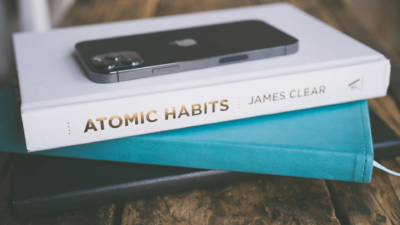Why Building Good Habits Is Your Game-Changer
Let’s cut through the noise: your day’s only as solid as the habits you lean on. In 2025, with notifications popping off like fireworks, hybrid schedules flipping faster than a trending reel, and to-dos piling up, building good habits isn’t just a nice perk, it’s your lifeline to keeping it together. Habits aren’t sexy, they’re sneaky powerful, turning chaotic mornings into smooth routines and endless “I’ll do it laters” into “done and dusted.” Whether you’re a pro wrestling deadlines, a student dodging the procrastination trap, or just someone fed up with spinning wheels, building good habits flips the script from stuck to unstoppable.
Now, here’s where it gets real. Good habits aren’t about willpower flexes or overnight miracles, they’re about smart moves that stick. Think of building good habits as your personal productivity superpower, one that lets you create healthy habits without breaking a sweat. Sure, you’ve heard the hype, “21 days to form a habit,” but let’s ditch that myth, it’s more like 66 days for most folks, and that’s if you’re doing it right. The payoff? A life where better habits run on autopilot, leaving you free to crush goals instead of chasing your tail.
This guide’s your no-BS roadmap to building good habits, blending pro-level know-how with a casual kick to keep it relatable. We’re pulling from the Routine Habits category, where creating good habits meets practical, everyday wins. Already vibing with time management strategies from Time Management Strategies: The Ultimate Guide? Awesome, this ties right in, habits and timing go hand in hand. Maybe you’ve tried focus boosters like The Pomodoro Technique: Does It Still Work? or Time Blocking 101, perfect, those are habit-friendly too.
So, why does this matter? Because forming new habits isn’t a luxury, it’s your edge in a world that’s all gas, no brakes. Ready to make a good habit stick and build a routine that doesn’t buckle? Let’s roll into the science that powers this gig, it’s where the magic starts brewing.
The Science Behind Lasting Habits
Alright, science has your back, now let’s get practical with building good habits that don’t fizzle out. Forget the grind-it-out myth, it’s not about raw willpower, it’s about slick strategies that stick. I’ve coached enough folks as a productivity pro to know the difference between flailing and nailing it comes down to systems, not sweat. So, here’s five rock-solid moves to make building good habits work in 2025, no fluff, just what delivers results.
First, start tiny. Big goals crash hard, so ditch “run a marathon” for “slip on sneakers.” Consistency’s the real MVP here, and small wins stack up fast for forming new habits. Next, habit stacking’s your secret weapon. James Clear’s Atomic Habits swears by it, tie a new habit to an old one, like flossing post-brushing (dig into it). It’s smooth, your brain barely blinks at the switch.
Then, lock in triggers. Keep a water bottle desk-side for hourly sips, clear cues turn building good habits into autopilot mode. Rewards seal it too, wrap up a task, grab a tea break, it’s not indulgence, it’s the habit loop clicking shut. Finally, track your wins. A notebook or app keeps tabs, seeing “21 days to build a habit” grow into a streak keeps you hooked (see Habit Tracking Apps: Top Picks for 2025).
Moves to Nail Building Good Habits
So, you’ve got the science locked down, now let’s shift gears to the how-to. Building good habits isn’t about muscling through with grit, it’s about playing smart with moves that stick. I’ve seen too many folks crash and burn thinking habit formation tips boil down to sheer will, but nah, it’s about strategy that feels less like a chore and more like a win. As a productivity pro with a casual streak, I’m laying out five killer moves to make building good habits click in 2025, no fluff, just the good stuff that works.
First, shrink it down. Grand plans like “hit the gym an hour daily” flop fast, start with “put on workout gear” instead. Tiny steps build consistency, and that’s where forming new habits takes root. Next, stack ‘em up. Pair a fresh habit with something you already do, think sipping water after your morning coffee. It’s a slick trick to create healthy habits without overthinking.
Then, lean on your environment. Keep a book by your couch to read nightly, smart placement makes cues do the heavy lifting for building good habits. Rewards keep the vibe alive, jot a task done, then grab a quick snack, it’s not just a treat, it’s fuel for the habit engine. Lastly, lock in accountability. Tell a buddy you’re building healthier habits or post it on X, a little pressure keeps you honest (see Habit Accountability: Does It Work?).
Here’s the straight-up truth: these moves aren’t random, they’re gold for creating good habits. Sure, it might take 66 days to make a new habit stick, depending on complexity, but these steps cut the grind. Better yet, pair them with time management strategies from Time Management Strategies: The Ultimate Guide—like syncing habits to your day’s rhythm—and you’re cruising. Tools come next, let’s amp this up with gear that makes it even easier.
Tools to Boost Your Routine
So, you’ve got the strategies down, now let’s talk gear. Building good habits isn’t about reinventing the wheel, it’s about picking the right tools to roll smoother in 2025. Think of this as your productivity toolkit, not some tech overload, just what amplifies your habit game with a pro’s edge and a chill twist. These aren’t must-haves, they’re accelerators to make forming new habits feel less like a slog and more like a win.
First up, habit trackers are your MVP. Toggl Track (https://toggl.com/track/) doubles as a time and habit logger, letting you see exactly when “read 10 pages” hits daily. It’s slick for syncing with time management strategies too, like blocking habit slots (see Top 10 To-Do List Apps for 2025). Prefer analog? Grab a notebook, mark an X every time you nail it, old-school but gold. Tracking’s power is in the visuals, streaks turn “21 days to build a habit” into a habit builder you can’t ignore.
Next, reminder apps keep your cues sharp. Google Calendar (https://calendar.google.com) drops a ping for “stretch at 8 AM,” slotting habits into your flow without a hitch. It’s free, syncs across devices, and keeps you on point. Want a fun spin? Habitica (https://habitica.com) gamifies building good habits, earn loot for “drink water hourly,” level up your routine.
Here’s the real talk: tools don’t do the work, they grease the gears. Pick one that clicks, skip the clutter, and watch creating good habits get a turbo boost. You’re not just forming habits, you’re crafting a system. Daily routines take this to the next level, so let’s map out how to weave these tools into your day without breaking a sweat.
Crafting Daily Routines That Stick
Routines aren’t just schedules, they’re the backbone of building good habits, turning sporadic wins into a system that hums on autopilot. It’s less about forcing a total life overhaul and more about weaving habits into your day where they fit, morning, midday, or night. I’ve coached enough folks as a productivity pro to know that a solid routine can make forming new habits feel like a breeze instead of a battle, so let’s map it out with a practical, laid-back spin that keeps it real.
Start your mornings with a no-brainer win. Five minutes of stretching or jotting a quick gratitude list isn’t rocket science, it’s a spark that sets the tone for the day. Keep it simple, consistency here lays the groundwork for creating good habits that stack up over time. Maybe it’s sipping water first thing or reviewing your to-do list, pick something small that signals “game on” without overwhelming you. The trick is to make a good habit so easy it’s harder to skip than do, and mornings are prime for that kickoff vibe.
Midday’s your reset window. Around lunch or that inevitable 2 PM slump, slot in a quick habit check, sip water, stretch your legs, or glance at your tracker. It’s not glamorous, but it keeps building healthier habits from fading when energy dips. This isn’t about perfection, it’s about keeping the thread alive, a little nudge to stay on track. Pair it with a moment to breathe, maybe step outside for a minute, and you’ve got a mini-reboot that keeps your day rolling smoothly without feeling like a chore.
Evenings are where you seal the deal. Take 10–15 minutes to wind down with purpose, reflect on what clicked today, did that water-sipping habit stick? Jot it down, then prep tomorrow’s cues, like setting out gym gear or a book by your bed. This isn’t just downtime, it’s setup for success, making building good habits a cycle that feeds itself. Tie these routines to time management strategies from Time Blocking—block those habit slots, and they’re locked in tight. Life’s messy though, so next, let’s tackle the hiccups that can throw you off.
Overcoming Hiccups in Habit Formation
Even with a killer routine, building good habits hits bumps, procrastination, distractions, the usual culprits. It’s not about dodging them entirely, it’s about outsmarting them with fixes that keep your habit train on the tracks. I’ve seen it all as a productivity pro, and here’s how to handle these hiccups with a straight-up, casual twist that keeps your momentum humming, no stress required.
Procrastination’s the big one, that nagging “I’ll do it later” vibe that stalls creating good habits. Shrink your start to something stupid-easy, think “open my laptop” instead of “write a novel.” Action kills inertia dead, and once you’re moving, forming new habits gets way less daunting (*see How to Stop Procrastinating in 5 Minutes. Keep it bite-sized, two minutes max, and watch how fast you trick yourself into doing more. It’s not rocket science, it’s psychology doing the heavy lifting for you.
Distractions are next, they’re everywhere in 2025, notifications, chatter, that X scroll that sucks you in. Mute your phone or lean on Toggl Track’s focus mode during habit blocks (https://toggl.com/track/), it’s like a force field for your brain (*see How to Handle Unexpected Interruptions. Better yet, tweak your space, keep your water bottle in sight, not buried in a drawer, little shifts keep distractions from derailing your habit builder groove. Consistency’s what you’re after, not perfection, so don’t sweat the occasional ping.
Then there’s inconsistency, you miss a day, the streak wobbles, and suddenly “21 days to form a habit” feels like a pipe dream. Relax, it’s not game over, just restart small, skip the guilt trip. Life’s messy, a single slip doesn’t trash building good habits, it’s the bounce-back that counts. Maybe you skipped your evening review, hit it tomorrow, resilience keeps forming habits alive.
Here’s the deal: these aren’t bandaids, they’re habit-saving moves. Sync them with time management strategies from Time Management Strategies: The Ultimate Guide—like timing your focus blocks—and you’re bulletproof. Next, let’s figure out who really wins with this habit-building gig, because it’s not one-size-fits-all.
Who Thrives with Good Habits?
Building good habits isn’t a magic fix for every soul out there, it clicks like a charm in some setups and stumbles in others. Knowing where it shines and where it flops keeps your habit game grounded and your expectations sharp. I’ve watched this play out as a productivity pro, so let’s break it down with a straight-shooting, casual take that cuts through the noise and gets to the point.
Task-driven gigs are where building good habits hits gold. Think roles with daily checklists, like knocking out emails, prepping reports, or reviewing schedules, habits lock in that consistency without you overthinking every step. These setups thrive on routine, and creating good habits slots in like a perfect puzzle piece, keeping the gears turning smooth and steady. If your day’s a series of small wins, this is your sweet spot, habits make it effortless over time.
Distraction-heavy zones love this too. Open offices, buzzing phones, or home setups with kids running wild, they all test your focus. Building good habits with smart cues, like keeping a water bottle front-and-center for hourly sips, cuts through that chaos. It’s not about fighting distractions head-on, it’s about outmaneuvering them with habit strategies that keep you on track (*see Time Management for Specific Lifestyles.
Flexible schedules get a big win here as well. Juggling meetings, side gigs, or school drop-offs? Quick habit wins, like a 5-minute stretch between calls, fit those gaps like a glove. It’s less about rigid rules and more about making better habits work wherever your day bends.
Now, flip the coin: deep-flow tasks, think coding marathons or drafting a novel, might snag on short habit blocks, they need unbroken stretches, so Time Blocking 101 could be your vibe instead. Same goes for wildly unpredictable roles, urgent calls or last-minute shifts can derail habit cues, flexibility trumps structure there.
Here’s the takeaway: building good habits rocks for structured or distraction-prone days, tweak it to fit, and you’re golden. Timing’s the next puzzle piece, so let’s sync it up and keep this habit train rolling.
Timing Your Routine to Success
Timing’s the unsung hero of building good habits, get it right, and your routines stick like superglue; get it wrong, and they’re a slog. It’s less about forcing habits into random slots and more about syncing them to your brain’s natural beat. I’ve seen habits tank when jammed into off-hours, so as a productivity pro with a casual streak, here’s how to nail the when of forming new habits in 2025, keeping it sharp and chill.
Peak energy’s your golden ticket. If mornings light you up, hit building good habits pre-noon, think journaling at 7 AM or a quick stretch to kickstart the day. Night owls thrive after dusk, maybe reading at 10 PM or planning tomorrow’s wins then. Point is, match your high-energy windows, habits flow when you’re buzzing, not battling a fog. Don’t guess, track your energy for a week, spot your prime, and plant your habit seeds there, it’s like watering a plant when it’s thirsty, not drowned.
Then, sync it up. Pair habits with your day’s flow, think sipping water post-lunch or reviewing goals pre-dinner, timing ties them to life’s rhythm. It’s not about rigid “21 days to form a habit” rules, it’s about habits clicking when your energy and schedule align. Better yet, weave in time management strategies from [The Pomodoro Technique: Does It Still Work?](dailyhabitlab.com/pomodoro-technique-still-works]—those 25-minute bursts can cue habits too.
Here’s the deal: timing turns building good habits from a chore into a groove. Play it smart, sync it up, and you’re set. Wrap this up next, let’s get you started on this habit kick.
Kickstart Building Good Habits Now
Building good habits isn’t some lofty dream, it’s your ticket to a routine that runs like a well-oiled machine, not a clunky chore-fest. You don’t need perfection, you need a start, and here’s the beauty: one tiny move today can snowball into a life where better habits call the shots. This roadmap’s your launchpad, blending pro-level smarts with a casual nudge to keep it doable in 2025’s wild ride.
So, where do you begin? Pick one move from this guide, maybe stacking a new habit like sipping water after coffee, or setting a cue like a book by your bed for nightly reading. Keep it small, make a new habit so easy it’s a no-brainer, and track it, a streak’s your motivator (*see Habit Tracking Apps: Top Picks for 2025. Don’t buy the “21 days to form a habit” hype, it’s more like 66 days for most, but every step counts toward creating good habits that stick.
Here’s the fun part: this ties into the Routine Habits category and beyond. Dig into time management strategies with Time Management Strategies: The Ultimate Guide—sync your habits with blocked time slots, and you’re golden. Craving focus hacks? The Pomodoro Technique: Does It Still Work? drops 25-minute bursts to kickstart your habit game, while Time Blocking 101 lays out a full-day plan to lock them in.
Now, let’s wrap it with a nudge: building good habits is your edge, not a grind. Start today, pick one thing, maybe forming new habits like a 5-minute stretch, and roll with it. Got a habit you’re eyeing? Drop it in the comments, I’m all ears for a productivity chat, let’s make building good habits your 2025 win!



